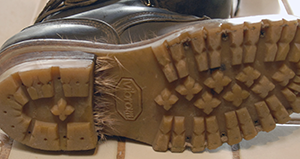Foxtails pose a serious threat to dogs, and working dogs are at particular risk since they spend so much time in the field.
The seed head of these grasses is bushy, like a fox's tail. The fan-shaped seeds contain small barbs, which allow foxtails to become lodged in dog fur and humans’ boots or socks. Once firmly embedded in a dog’s fur, foxtails may travel under the skin, causing bleeding, infection and even death.
The signs and symptoms of a foxtail problem may go unnoticed or mistaken for other issues resulting in a severe problem. Because seeds are fan-shaped, they have a single direction path; they easily enter fur and skin but cannot be easily removed.
Caution is required when removing foxtails so that they do not break apart.
What exactly are foxtails?
Foxtails are a group of barley grasses that are predominantly found in California and other western states. Hordeum murinum is the genus and species of wild barley. These annuals produce attractive green seeds in the spring that are somewhat similar in appearance to wheat. Green, young plants do not pose a problem to dogs. In the late spring through summer the seeds turn light brown or tan and then become a hazard to working dogs. The seed heads may range in size from less than an inch to almost 3 inches. The tiny barbs on the seed heads ensure transport of seeds via animals to other locations for germination. Unfortunately, foxtails may also be effectively transported into the tissue of a dog.



